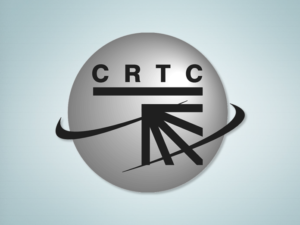 The CRTC has kicked off three weeks of hearings on the Online Streaming Act, with Quebecor and Bell urging the commission to expeditiously consider regulatory burdens placed on broadcasters as they wade through a bad advertising climate and foreign competition. On the first day of the hearing, witnesses proposed percentages of previous year’s Canadian broadcasting revenues go toward a mandatory base contribution to support Canadian content funds. The Directors Guild of Canada (DGC) also pitched Tuesday the importance of a five per cent base contribution from online services, which it said would translate to about $200 million a year for third-party production funds. Google said the CRTC is putting the cart before the horse when it comes to considering a mandatory contribution before more clearly defining Canadian content. Read full coverage of this week’s hearings in our partner publication, CARTT.ca.
The CRTC has kicked off three weeks of hearings on the Online Streaming Act, with Quebecor and Bell urging the commission to expeditiously consider regulatory burdens placed on broadcasters as they wade through a bad advertising climate and foreign competition. On the first day of the hearing, witnesses proposed percentages of previous year’s Canadian broadcasting revenues go toward a mandatory base contribution to support Canadian content funds. The Directors Guild of Canada (DGC) also pitched Tuesday the importance of a five per cent base contribution from online services, which it said would translate to about $200 million a year for third-party production funds. Google said the CRTC is putting the cart before the horse when it comes to considering a mandatory contribution before more clearly defining Canadian content. Read full coverage of this week’s hearings in our partner publication, CARTT.ca.

The Canadian Journalism Labour Tax Credit was included in this week’s 2023 Fall Economic Statement. Effective for labour costs incurred on or after Jan. 1, 2023, the federal government proposes to increase the yearly limit on labour costs that can be claimed per eligible employee from $55,000 to $85,000, and temporarily increase the tax credit rate from 25 to 35% for a period of four years. The measure would cost an estimated $129 million over five years, starting in 2024-25, and $10 million per year ongoing. News Media Canada, which represents 570 news publishing titles, welcomes the changes, while Michael Geist, Canada Research Chair in Internet and E-Commerce Law at the University of Ottawa, writes that the bailout “raises enormous concerns about the independence of Canadian media.”
 The Canadian Association of Journalists’ third annual Canadian Newsroom Diversity Survey finds about 75.5% of Canadian newsrooms are white, rising to 84% when you reach the supervisory level. The most comprehensive breakdown of Canadian newsrooms to date, the CAJ collected data on 6,035 journalists from 273 newsrooms across radio, television, digital and print media for the 2023 survey. Reflecting data from participating newsrooms, including CBC/Radio-Canada, Global News, Canadaland, Metroland Media, and blogTO, 19.3% of journalists within the organizations surveyed identified as a visible minority, with 5.2% identifying as Indigenous. The survey found about seven in 10 newsrooms have no Indigenous or visible minority staff in their top three leadership positions. Read more here.
The Canadian Association of Journalists’ third annual Canadian Newsroom Diversity Survey finds about 75.5% of Canadian newsrooms are white, rising to 84% when you reach the supervisory level. The most comprehensive breakdown of Canadian newsrooms to date, the CAJ collected data on 6,035 journalists from 273 newsrooms across radio, television, digital and print media for the 2023 survey. Reflecting data from participating newsrooms, including CBC/Radio-Canada, Global News, Canadaland, Metroland Media, and blogTO, 19.3% of journalists within the organizations surveyed identified as a visible minority, with 5.2% identifying as Indigenous. The survey found about seven in 10 newsrooms have no Indigenous or visible minority staff in their top three leadership positions. Read more here.
 The Canadian Ethnic Media Association’s 45th Annual Awards for Journalistic Excellence will take place Nov. 25. Among this year’s winners are Christopher Cheung from The Tyee (Online); Vera He, Fairchild TV in Vancouver (Television); and Anil Thapa from Toronto’s Namaste Radio (Radio). This year’s Sierhey Khmara Ziniak Award, named for CEMA’s founder, is David Martin Shulist of Wilno, ON, an advocate for the Kashubian language and culture, “for his unswerving dedication to multiculturalism and its affirmative expression through media and community engagement.”
The Canadian Ethnic Media Association’s 45th Annual Awards for Journalistic Excellence will take place Nov. 25. Among this year’s winners are Christopher Cheung from The Tyee (Online); Vera He, Fairchild TV in Vancouver (Television); and Anil Thapa from Toronto’s Namaste Radio (Radio). This year’s Sierhey Khmara Ziniak Award, named for CEMA’s founder, is David Martin Shulist of Wilno, ON, an advocate for the Kashubian language and culture, “for his unswerving dedication to multiculturalism and its affirmative expression through media and community engagement.”
 CBC/Radio-Canada has announced the renewal of its partnership agreement with German public broadcaster, ZDF. The memorandum of understanding (MOU) focuses on two key areas: exchanging and improving verification of news content; and scripted, factual-entertainment and documentary programming, including co-development and promotion of content for linear, on-demand and digital platforms. The renewed partnership extends over a period of three years.
CBC/Radio-Canada has announced the renewal of its partnership agreement with German public broadcaster, ZDF. The memorandum of understanding (MOU) focuses on two key areas: exchanging and improving verification of news content; and scripted, factual-entertainment and documentary programming, including co-development and promotion of content for linear, on-demand and digital platforms. The renewed partnership extends over a period of three years.




